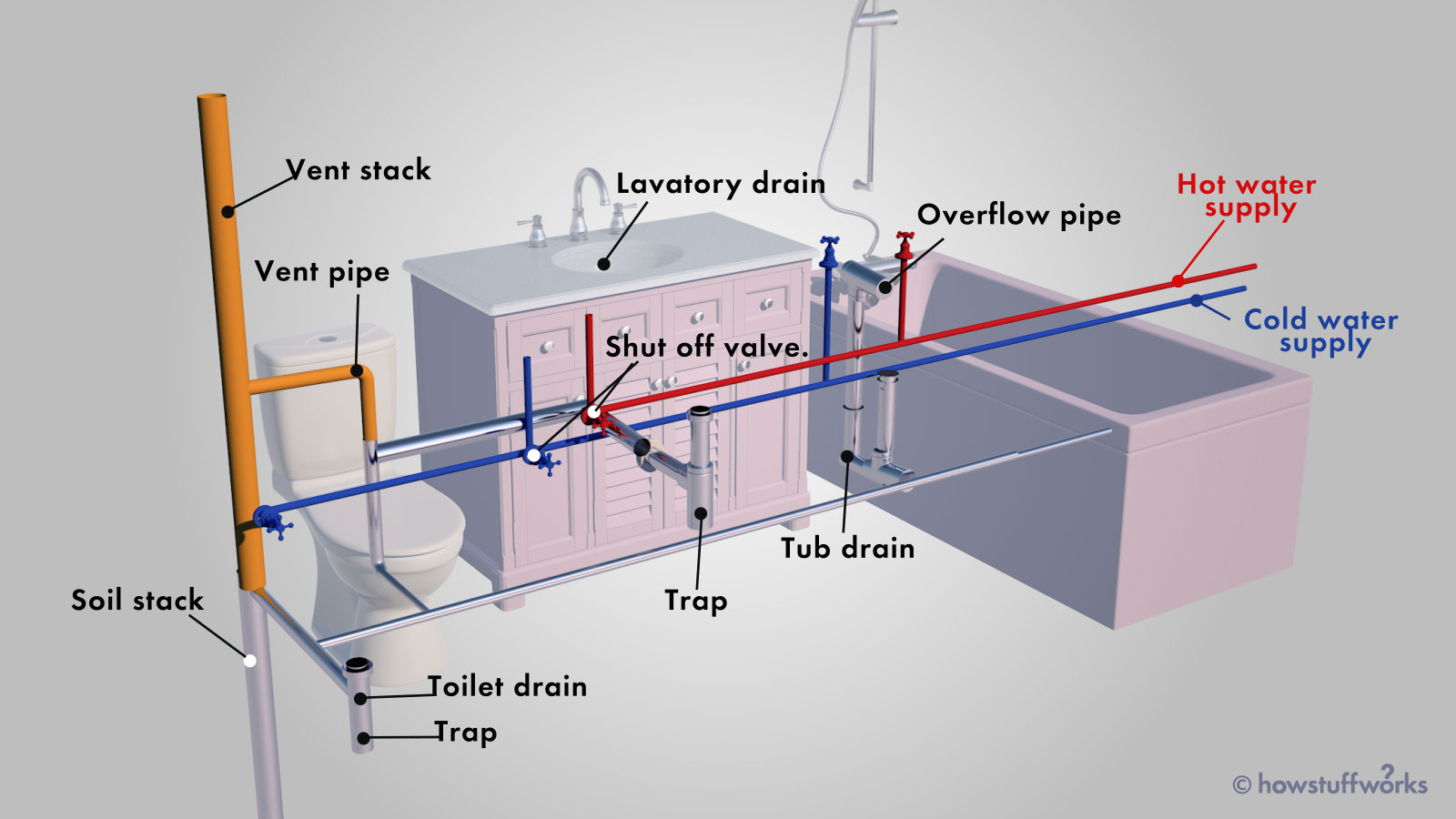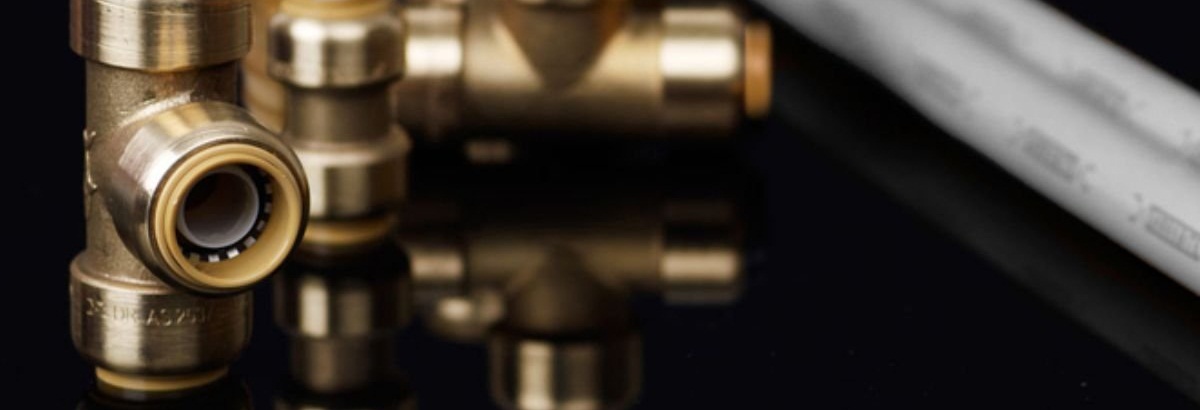Understanding Your Property's Plumbing System Anatomy
Understanding Your Property's Plumbing System Anatomy
Blog Article
Have you been trying to locate information and facts around Anatomy of a House: Understanding the Components?

Understanding exactly how your home's pipes system works is crucial for each home owner. From delivering tidy water for drinking, food preparation, and bathing to securely eliminating wastewater, a well-maintained plumbing system is vital for your family's wellness and comfort. In this thorough overview, we'll check out the detailed network that makes up your home's pipes and offer ideas on maintenance, upgrades, and managing usual problems.
Intro
Your home's plumbing system is more than simply a network of pipelines; it's a complicated system that guarantees you have access to clean water and reliable wastewater removal. Understanding its parts and how they interact can help you avoid pricey repair work and make sure everything runs efficiently.
Basic Parts of a Pipes System
Pipes and Tubing
At the heart of your pipes system are the pipelines and tubing that bring water throughout your home. These can be constructed from numerous materials such as copper, PVC, or PEX, each with its benefits in regards to sturdiness and cost-effectiveness.
Components: Sinks, Toilets, Showers, and so on.
Components like sinks, commodes, showers, and bathtubs are where water is used in your house. Recognizing just how these components connect to the plumbing system assists in detecting issues and intending upgrades.
Shutoffs and Shut-off Points
Valves control the flow of water in your pipes system. Shut-off shutoffs are critical during emergencies or when you need to make repair services, permitting you to separate parts of the system without interfering with water flow to the entire house.
Water System System
Key Water Line
The major water line attaches your home to the metropolitan water supply or a private well. It's where water enters your home and is distributed to different fixtures.
Water Meter and Pressure Regulator
The water meter procedures your water usage, while a pressure regulator ensures that water flows at a safe pressure throughout your home's plumbing system, avoiding damage to pipes and fixtures.
Cold Water vs. Hot Water Lines
Understanding the distinction between cold water lines, which supply water straight from the major, and warm water lines, which lug warmed water from the hot water heater, assists in fixing and preparing for upgrades.
Drain System
Drain Pipeline and Traps
Drain pipelines lug wastewater far from sinks, showers, and toilets to the sewer or septic system. Traps avoid drain gases from entering your home and likewise catch debris that could create blockages.
Ventilation Pipelines
Ventilation pipes enable air into the drain system, avoiding suction that could reduce water drainage and trigger traps to empty. Proper air flow is necessary for preserving the stability of your plumbing system.
Importance of Correct Drain
Guaranteeing correct water drainage protects against back-ups and water damage. Routinely cleaning up drains and maintaining catches can stop pricey repair services and prolong the life of your plumbing system.
Water Furnace
Kinds Of Water Heaters
Hot water heater can be tankless or standard tank-style. Tankless heating units warmth water on demand, while containers keep warmed water for instant usage.
How Water Heaters Attach to the Plumbing System
Recognizing exactly how water heaters attach to both the cold water supply and hot water circulation lines helps in diagnosing concerns like inadequate warm water or leaks.
Upkeep Tips for Water Heaters
On a regular basis flushing your water heater to get rid of sediment, examining the temperature setups, and checking for leaks can prolong its lifespan and enhance energy effectiveness.
Common Pipes Issues
Leakages and Their Reasons
Leaks can take place because of maturing pipes, loosened fittings, or high water stress. Addressing leakages promptly prevents water damages and mold and mildew growth.
Obstructions and Obstructions
Clogs in drains pipes and toilets are usually triggered by flushing non-flushable things or an accumulation of oil and hair. Utilizing drain displays and being mindful of what drops your drains pipes can stop clogs.
Indicators of Plumbing Troubles to Watch For
Low water stress, slow drains pipes, foul odors, or unusually high water expenses are indicators of prospective pipes issues that need to be attended to without delay.
Plumbing Maintenance Tips
Normal Inspections and Checks
Schedule yearly pipes inspections to catch problems early. Try to find indicators of leaks, rust, or mineral accumulation in taps and showerheads.
Do It Yourself Maintenance Tasks
Easy jobs like cleaning faucet aerators, looking for commode leakages using dye tablets, or protecting revealed pipelines in cold climates can avoid major pipes concerns.
When to Call a Specialist Plumber
Know when a plumbing concern requires expert know-how. Attempting intricate repair work without correct expertise can result in more damages and greater repair service prices.
Updating Your Pipes System
Factors for Updating
Updating to water-efficient components or changing old pipelines can boost water top quality, minimize water bills, and enhance the value of your home.
Modern Plumbing Technologies and Their Benefits
Explore technologies like clever leakage detectors, water-saving commodes, and energy-efficient water heaters that can save cash and lower environmental impact.
Cost Factors To Consider and ROI
Compute the ahead of time prices versus long-term savings when taking into consideration pipes upgrades. Several upgrades pay for themselves via minimized utility bills and fewer repair work.
Environmental Effect and Conservation
Water-Saving Components and Home Appliances
Setting up low-flow taps, showerheads, and toilets can dramatically reduce water usage without sacrificing performance.
Tips for Reducing Water Usage
Simple practices like repairing leaks quickly, taking shorter showers, and running full loads of laundry and dishes can conserve water and reduced your energy costs.
Eco-Friendly Pipes Options
Take into consideration lasting pipes materials like bamboo for flooring, which is durable and environmentally friendly, or recycled glass for kitchen counters.
Emergency situation Preparedness
Actions to Take Throughout a Plumbing Emergency situation
Know where your shut-off shutoffs are located and how to turn off the water in case of a burst pipe or significant leak.
Importance of Having Emergency Situation Get In Touches With Convenient
Keep contact info for local plumbers or emergency solutions easily available for fast response throughout a plumbing situation.
DIY Emergency Situation Fixes (When Suitable).
Short-lived repairs like utilizing duct tape to spot a dripping pipe or positioning a container under a dripping tap can lessen damage until a specialist plumbing arrives.
Verdict.
Comprehending the anatomy of your home's pipes system equips you to maintain it successfully, saving money and time on repair services. By following normal maintenance routines and remaining informed concerning contemporary plumbing innovations, you can ensure your pipes system operates successfully for years ahead.
HOW YOUR PLUMBING SYSTEM WORKS
Which Pipes Do What?
Blue lines = fresh water supply entering the building
Red lines = hot water supply entering the building
Grey lines = pipes carrying waste away from the building and venting pipes carrying gases away from the building (through the roof)
YOUR MAIN PLUMBING SYSTEMS
There are two main plumbing systems that support your home s basic plumbing needs one that brings clean water into your home, and one that sends dirty water away from your home. Connected to the toilet, bath, shower, and other faucets in your home, these two systems keep your water flowing in the right directions.
ACCESSING FRESH WATER
Fresh and clean water is brought into your home through the main water supply line . Filtered through one pipe, this water is pressured to flow into the various fixtures in your home at any given time.
This water can be sourced from a well located on your property, a pond or river (mostly cottages), or, as in most cases, from the city s municipal water treatment centre. However, it is important to note that water that is untreated, such as the water siphoned from ponds or rivers, may not be safe to drink. Personal water supplies always need to be treated for hardness and contaminants before consumed.
MUNICIPAL WATER SUPPLIES
Improve taste and odour
Remove sediment
Eliminate hardness
Reduce chlorine
COLD WATER SUPPLY VS. HOT WATER SUPPLY
Cold water flows into your home or building through the service line, which then distributes hot or cold water to your fixtures. This line is most commonly run through a central column that runs floor to floor. Hot water runs in short and straight pipes as the longer the pipeline, the more heat that will be lost in the transfer. Having shorter pipes also allows residents to access hot water more quickly.
WASTE WATER SYSTEM
Your wastewater system is divided into two parts pipes that send wastewater away from your home and venting pipes that send sewer gas away from your home. Sewage water travels through pipes that flush the water and waste towards local sewers that are operated and managed by your city or town. Most sewer systems rely on gravity to move the wastewater to where it needs to go.
The further away from your toilet or sink, the larger wastewater pipes become. This allows for waste to be disposed of from various parts of your home or business at once without pipe blockages. The angle and flow of these pipes are also essential for keeping your waste pipes clear of build up.
https://harrisplumbing.ca/how-your-home-plumbing-system-works/

HOW YOUR PLUMBING SYSTEM WORKS
Which Pipes Do What?
YOUR MAIN PLUMBING SYSTEMS
There are two main plumbing systems that support your home s basic plumbing needs one that brings clean water into your home, and one that sends dirty water away from your home. Connected to the toilet, bath, shower, and other faucets in your home, these two systems keep your water flowing in the right directions.
ACCESSING FRESH WATER
Fresh and clean water is brought into your home through the main water supply line . Filtered through one pipe, this water is pressured to flow into the various fixtures in your home at any given time.
This water can be sourced from a well located on your property, a pond or river (mostly cottages), or, as in most cases, from the city s municipal water treatment centre. However, it is important to note that water that is untreated, such as the water siphoned from ponds or rivers, may not be safe to drink. Personal water supplies always need to be treated for hardness and contaminants before consumed.
MUNICIPAL WATER SUPPLIES
COLD WATER SUPPLY VS. HOT WATER SUPPLY
Cold water flows into your home or building through the service line, which then distributes hot or cold water to your fixtures. This line is most commonly run through a central column that runs floor to floor. Hot water runs in short and straight pipes as the longer the pipeline, the more heat that will be lost in the transfer. Having shorter pipes also allows residents to access hot water more quickly.
WASTE WATER SYSTEM
Your wastewater system is divided into two parts pipes that send wastewater away from your home and venting pipes that send sewer gas away from your home. Sewage water travels through pipes that flush the water and waste towards local sewers that are operated and managed by your city or town. Most sewer systems rely on gravity to move the wastewater to where it needs to go.
The further away from your toilet or sink, the larger wastewater pipes become. This allows for waste to be disposed of from various parts of your home or business at once without pipe blockages. The angle and flow of these pipes are also essential for keeping your waste pipes clear of build up.
https://harrisplumbing.ca/how-your-home-plumbing-system-works/
We are very curious about Anatomy of a House: Understanding the Components and I am assuming you liked our entry. Are you aware of another person who is occupied with the niche? Please feel free to promote it. Bless you for your time. Please check our blog back soon.
Visit Our Website Report this page